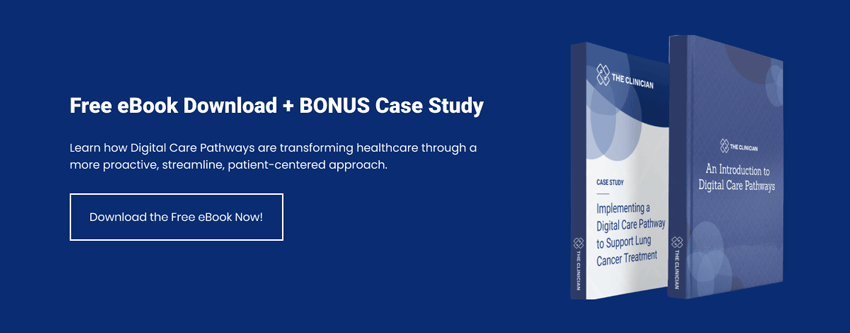How Digital Care Pathways Impact What Healthcare Organisations Can Do for Patients
As we’ve discussed in our blog previously, “Digital Care Pathways” (DCPs) employ digital technologies to follow and support patients throughout their healthcare journeys. Digitising the healthcare journey via DCPs provides healthcare systems with a way to more deeply understand each patient’s health and deliver more streamlined, proactive, and patient-centric care. In this blog post, we take a closer look at the many benefits of DCPs for patients and providers alike.
DCPs improve convenience for patients.
Patients are all too familiar with how traditional healthcare appointments often begin: There is lots of paperwork, much of it repetitive, and it doesn’t end up with the healthcare provider by the time the appointment starts. Implementing DCPs can eliminate this aged and outdated ritual by providing for a more effective and efficient exchange of information between patients and their healthcare providers, as well as within organisations themselves. With digital care pathway technology, forms and administrative tasks that might typically be done in a waiting room can be completed from the patients’ homes at their convenience, and on the digital device of their choice.
DCPs improve patient-centricity.
DCPs offer a healthcare experience that is much more patient-centric, providing, in many cases, not only improved convenience, but the advantages of more direct connections between patients in the community and their healthcare providers (HCPs). This connection supports timely reporting of health concerns from patients, and timely responses from HCPs to deliver more personalised, proactive care. Although it might seem counterintuitive, the digitisation of the patient-provider connection actually strengthens the relationship and improves the quality of care delivered.
DCPs improve personalisation of care.
Patient-Reported Outcome Measures, or “PROMs,” deployed within a DCP give healthcare institutions and providers the detailed information they need to better understand the unique health status of each and every patient. PROMs also provide a quick, clear picture of how the outcomes of any individual patient compare to those of a larger set of patients. In other words, they allow the healthcare providers to ask, “Is this particular patient’s health status in alignment with that of others or not?” And, “If this patient’s health status is unusual, what actions, if any, are called for?”
Effective DCPs are within reach.
We at The Clinician are pleased to offer an innovative platform for digitisation of care, one designed to help healthcare providers and institutions do more for patients while doing better as organisations. With our platform, ZEDOC, at work, healthcare providers and institutions are able to collect, analyse, and act on each patient’s key outcome and experience information across the care continuum, supporting better care, better relationships between healthcare providers and patients, and a better understanding of how well the healthcare institution is serving its “customers.”
By keeping patients and providers in sync at every point in the care pathway, ZEDOC provides care teams with a new way to deliver effective, efficient, and patient-focused healthcare.
To learn more about ZEDOC and DCPs, click the button below to schedule a demo.


